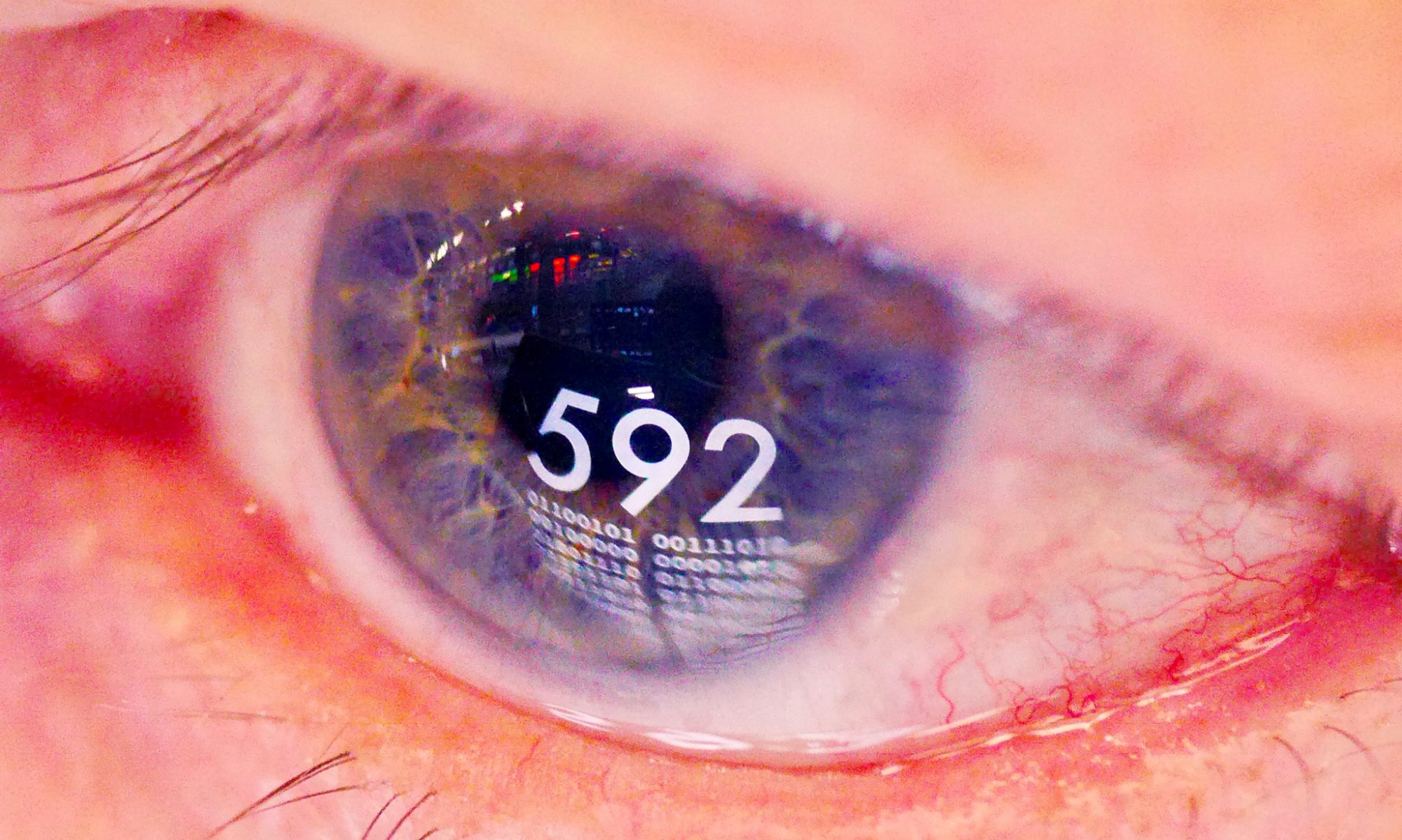Another throw-back project.
This time from 2016, the Fotomarathon – theme: Nervous Systems.
This is the original blog-post I wrote after just having won it . . .
Nervous Systems
Can our inner thoughts be transmitted by our eye movements?
Can our future actions be predicted by our current behaviour?
Almost certainly: New York Times – How companies learn your secrets.
Any new technology brings a wealth of challenges for society, as it begins to alter previous behaviours, and the embracement of digital technologies is no different, particularly regarding the ease at which data can now so easily be collected and analysed, searching for patterns, all in the cause of the corporate balance sheet.
It is both a blessing and a curse, as we enjoy the benefits of an App based economy, but often at the cost of our privacy.
This fotomarathon was part of the “Nervous Systems – Quantified Life and the Social Question Exhibition” at the Haus der Kulturen der Welt, Berlin, an exhibition concerning itself with these questions.
Competing
If you wanted to bake a cake, you wouldn’t just blindly reach into the food cupboard and grab the nearest items, throw them all in a bowl together, stick it in the oven for an indiscriminate amount of time and just hope for the best.
It would almost certainly not even be edible and at worst you could quite easily end up on a murder charge using the above method.
“M’lud, it is a clear case of wilful poisoning . . . ”
Surely a little preparation could avoid a multitude of costly blunders.
And what if it were a cake baking competition?
Surely it would be advisable to do a little research concerning previous years winners first, then pick a good recipe and make sure you had only the best ingredients, and above all, to do a few practice bakes before the big day?
Well, that’s how I approached the 2016 Fotomarathon Berlin.
Preparation is everything.
1: Above all, know your subject.
So I went to the exhibition just a couple of days after it first opened and immersed myself in it, reading as many of the exhibits as possible, and just before I left I went for a coffee and jotted down a few notes and ideas that had occurred to me.
I now had 2 weeks in which to see what my subconscious came up with.
2: Read the rules and understand them.
It’s not only about complying with them, it’s about understanding the limitations they set you and how best to confront that.
For example knowing that the pictures had to be taken in chronological order, but realising that there were only 5 hours in which to take 6 photographs, but that included all travelling and breaks for refreshment, so realistically there were really only 3 photography hours available, so, finding a location where it should be possible to find solutions to the 6 tasks was extremely important.
I spend a week cycling around the area scouting the various possibilities and decided that the Hauptbahnhof (main railway station) almost certainly offered the most promising opportunities.
3: Develop some ideas
Fotomarathon: Competition handout
Just brainstorm and write every last stupid idea down and then take a handful of the best, see if they are feasible and are flexible enough to be adapted for a range of different problems.
4: Don’t leave anything to chance.
Prepare everything the evening before, so that on the day you can concentrate totally on the tasks at hand.
5: It’s always about capturing a good photograph
Fotomarathon – Nervous Systems: Themes
My start number: 592
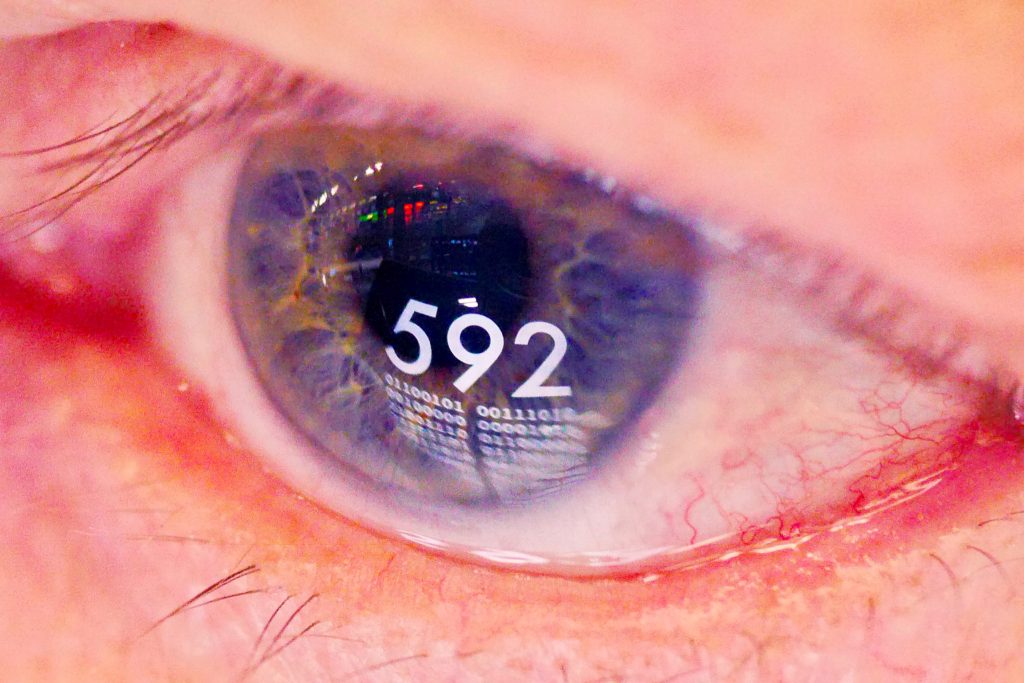
1: We are the product (Wir sind das Product)
This was an idea I had planned out, I was reasonably certain that I could use it somewhere because the main theme was digital data and the fact that it is being collected and analysed by other people, so, to incorporate an all seeing eye seemed quite obvious.
But it didn’t actually start like this, originally I’d planned to use a children’s torch and bits of this and that, and project something onto my face – I studied design and I’m a chronic DIYer.
But none of it worked, because it was either too complicated, or not bright enough, or worse still, it just wasn’t interesting.
So I screwed on a macro-conversion-adapter and zoomed right into my eye and suddenly noticed that I could clearly see all the reflected lights in it.
That was my “Eureka” moment, when I thought of using the iPad to project a word into my eye.
I made a rough test in Photoshop to see if it even worked, and then set about finding an App that I could use on the day and practiced using it, until I could do it in my sleep.
But even so, it still didn’t have the quality I was looking for, because of the limitations of the macro-conversion-adapter I was using, so I decided to bite the bullet and buy a dedicated macro lens for the camera, a decision I haven’t regretted, because not only did it solve all the problems I was having with the taking of this photo, but it’s opened up a completely new world of photography for me.
Anyway, upon seeing the list of themes it was clear that I would easily be able to adapt the idea for the first task “we are the product” and just project my start number using my iPad onto my eye.
Unfortunately just as the competition started, I was overcome by an intense hunger which almost prevented any coherent thought, but I was lucky enough to get it quickly under control by clever use of the phrase “Big Mac and Fries please”, and I was also able to use the time productively by simultaneously preparing the graphic I would need.
It all went to plan, and I thought that the final result would look wicked enough to grab everyone’s attention, because who else would have anything like it?
So, I’m extremely pleased with the final photo.
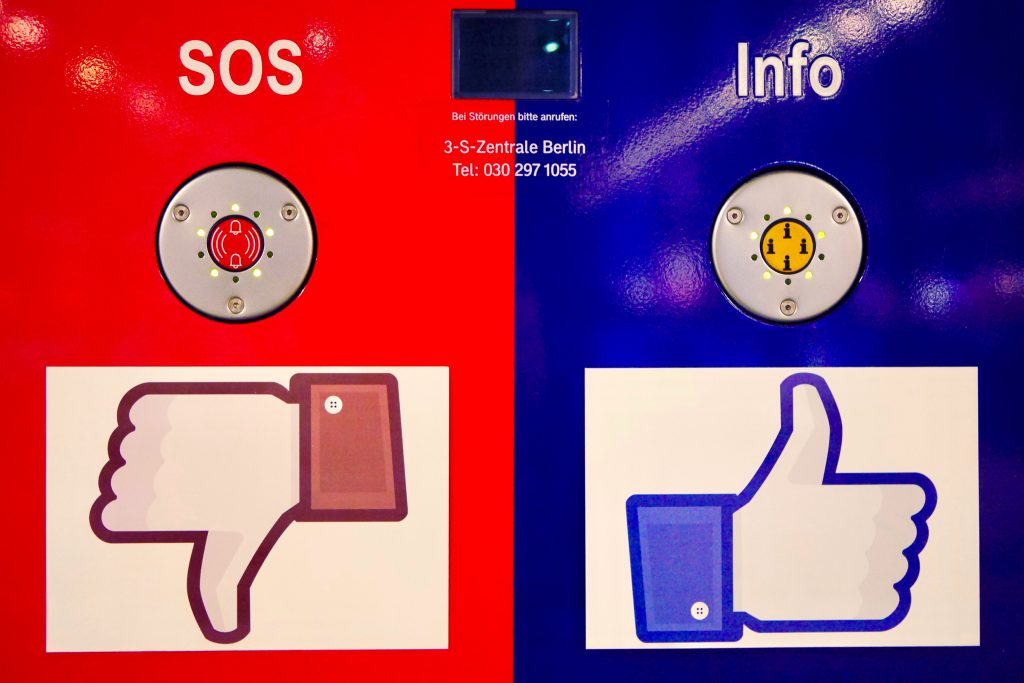
2: Everything to share? (Alles zu teilen)
Everything?
Absolutely everything?
Even distress and lack of knowledge?
What a bit of luck I’d printed out those Facebook type “Likes” the evening before then.
I thought something like that may come in useful in an emergency.
I had intended maybe asking pedestrians to hold them up against something they either liked or disliked, but upon seeing these two buttons next to each other there, I far preferred the more obscure meaning.
So I stuck my “Likes” quickly to the surface and ignoring the booming metallic voice coming over the station PA ordering me to stop, I quickly took the picture I needed and disappeared into the crowd.
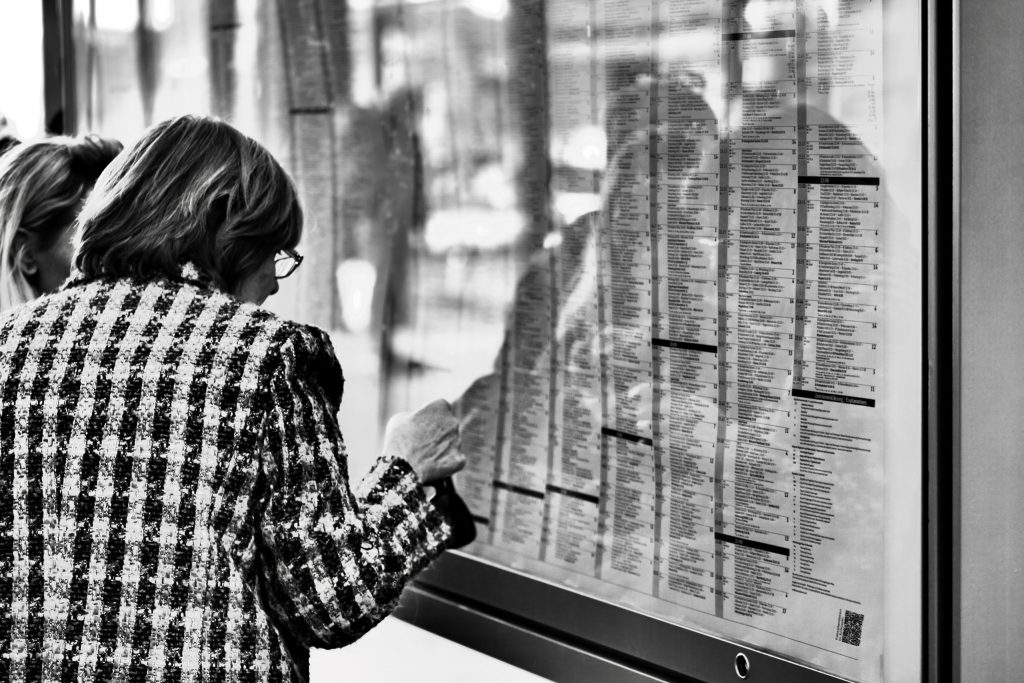
3: Data slingshot (Datenschleuder)
What is a data slingshot?
Something that slings data at you I expect, and a modern rail station is just full of huge amounts of data that have to be collated and displayed in an understandable form so that travellers can find their way from A to B to . . . Z with the minimum of effort.
I had tried taking interesting photos at odd angles of all the modern displays, giant, sterile LED screens, high up on walls and easy to read, but they were always somehow lacking the human dimension.
Modern street photography is often hampered by the very people you are trying to capture, because you need everyone to sign a model release before you even click the shutter, which robs the shot of all its spontaneity, and so much street photography is now just the backs of peoples heads, and it’s very difficult to capture a real moment whereby the face isn’t actually important, and I felt this was one of them, because it’s something we’ve all seen before and done ourselves, leaning into the timetable, and here I loved the reflection of both people in the glass.
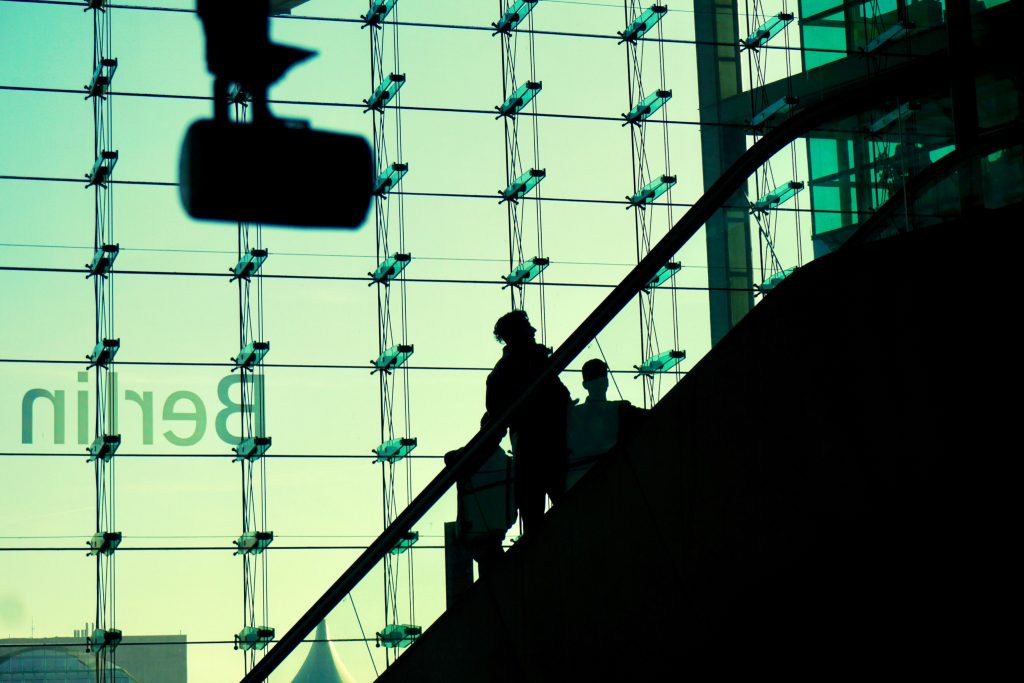
4: Movement profile (Bewegungsprofil)
I found this difficult, but I eventually thought that you would only have a profile if you were being watched, so, I had to find a good interesting shot with a camera of some sort in it together with people, and after searching high and low for something suitable I came upon this.
The bright background of the station glass facade I found interesting in itself, certainly better than just a plain surface, it gives it texture and it also puts everything else into silhouette, which I felt gave the whole picture an anonymous feeling, everyone is being watched and that therefore everyone has a profile.
I had to stand there though for about 15 minutes taking different photos from slightly different angles and of different people on the escalator until I got the shot I wanted, and I’m very pleased I did.
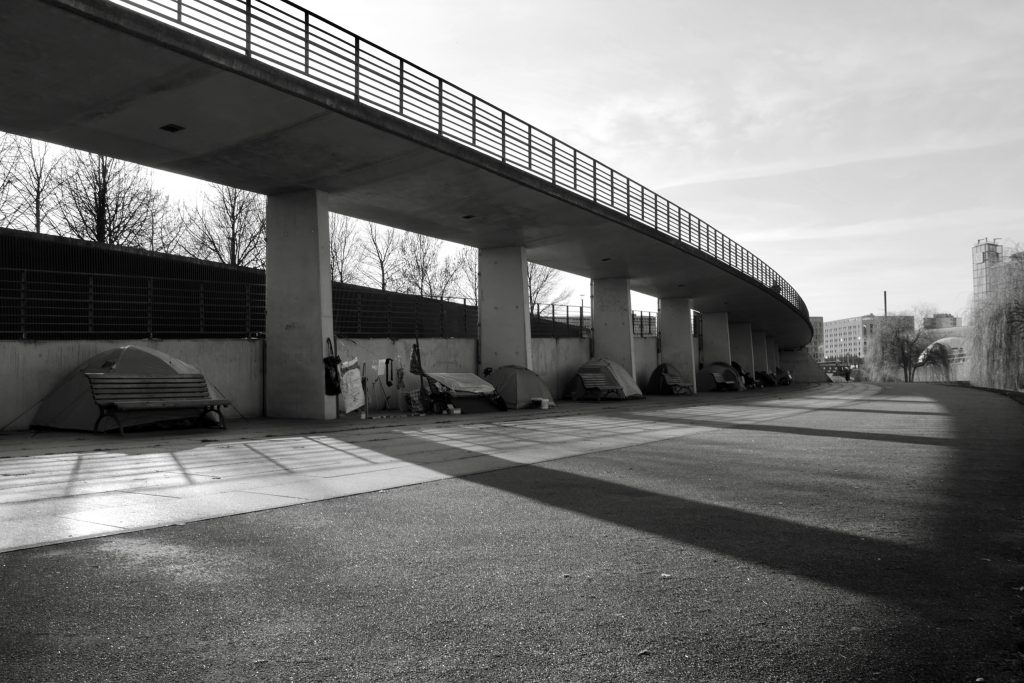
5: Flying under the radar (Durchs Raster fallen)
This picture is an excellent example of how important luck can be in a competition like this, and not just the once, but twice.
But you have to be aware of it when it crosses your path, for there is a great truth in the old adage: You make your own luck.
I was on my way to the Hauptbahnhof with all the themes running through my mind, when I cycled past this bridge with all the tents and other vagrant’s belongings under it, and so I made a mental note that it could come in useful if I couldn’t find anything more suitable, because how much further can you fly under the radar than living under a bridge on a bench?
And as it happened I couldn’t find anything better, so I cycled back and went to take the best shot I could of it all, but what I lined up just wasn’t working, so I decided to try zooming right in on something specific, so I changed the lens to a telescopic zoom, but with an initial wider angle, and as I held the camera to my eye I saw the shadows that hadn’t been there earlier in the day, or with lens I’d originally been using, I immediately thought “wow, that’s it !!!” and here it is.
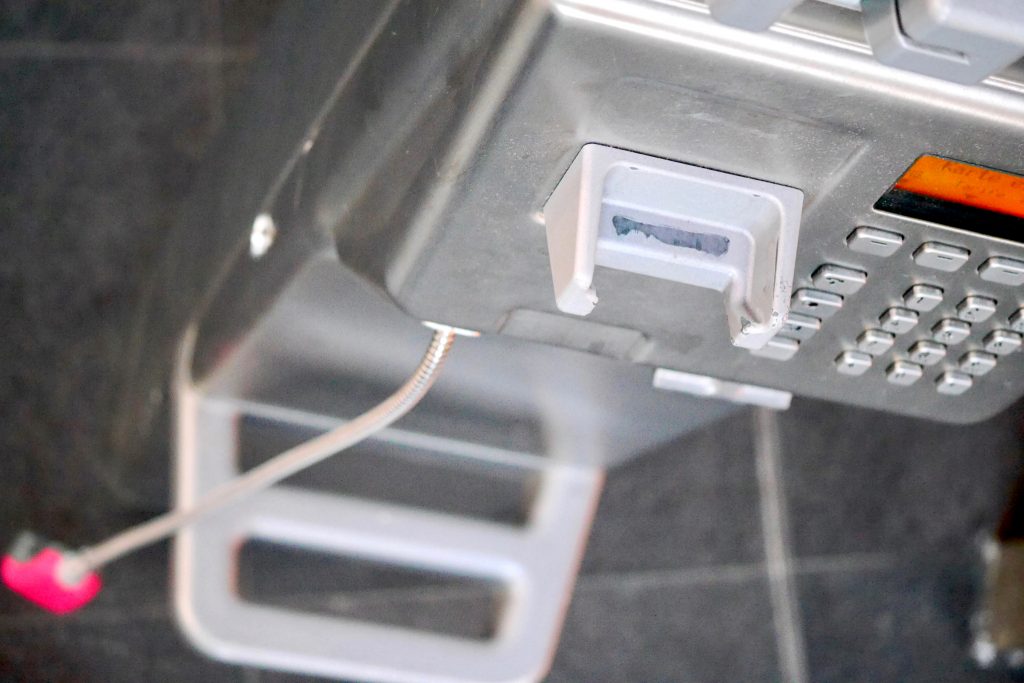
6: Covering tracks (Spuren verwischen)
How do you cover your tracks? and if they are that well covered, is there anything left to photograph anyway?
The point of it all is, that using anything digital will always leave a data trail, so surely the answer would be to use a public means of communication.
There aren’t many of these left now, but there are still some at the Hauptbahnhof, and where better to lose yourself than in a crowd of anonymous travellers?
I took the phone off the hook to give the impression of it just having been used by “the Shadow” and took the shot at an odd angle with a wide aperture using the “expressive” filter to bring out the contrast of the only two colours in an otherwise very grey metallic scene.
Conclusion
And was it all worth it?
Seemingly so, at the end of the event there was a slide show of all the entries, after which all the participants voted for the best photo-series and apparently mine was the clear winner (no, I didn’t vote for my own), mine was judged to be the people’s favourite and I went home with a new camera bag.
And now it’s fingernail-biting time to see which 6 photos the judges will pick for the exhibition as part of the European Month of Photography festival.
All in all though, it was a thoroughly enjoyable day.
EMOP
- Fotomarathon, Berlin 2016
- Urban Photo Race, Berlin 2017
- Micro Location: Graffiti
- The Crack In The Pavement
- Satan’s Pile
- Heroes, some remembered, most forgotten
- Waldmeister ist Retro
- Altstadt Spandau U-Bahn station
- Concrete, where architecture meets climate change
- That industrial look
- City glass, a very public gallery
- The Hauptbahnhof, a monument to success
© Andrew James Kirkwood – 2024
